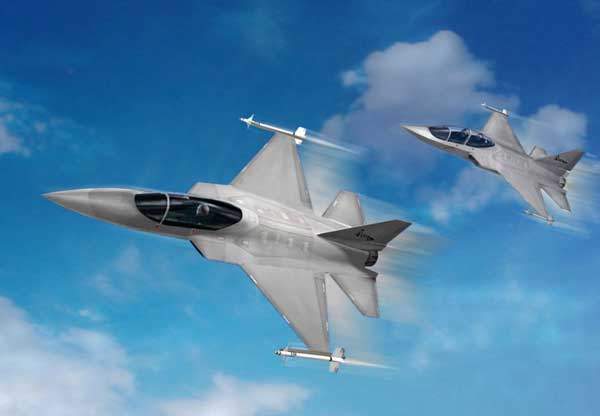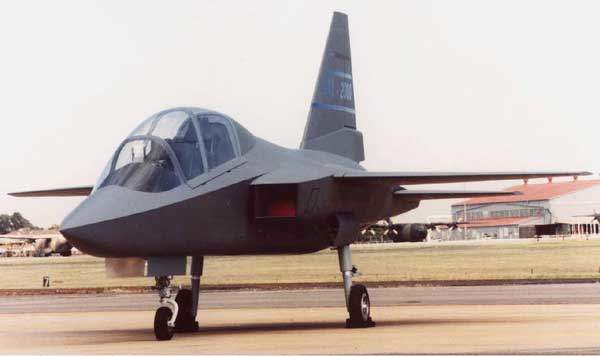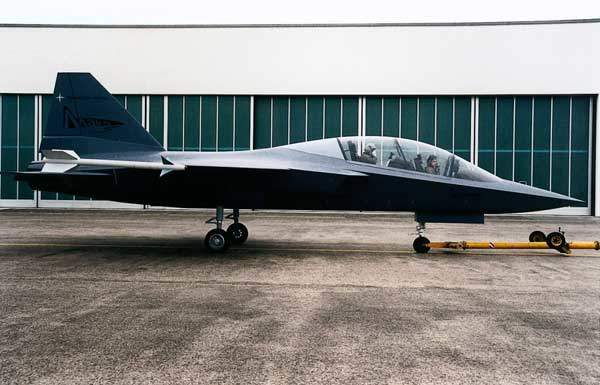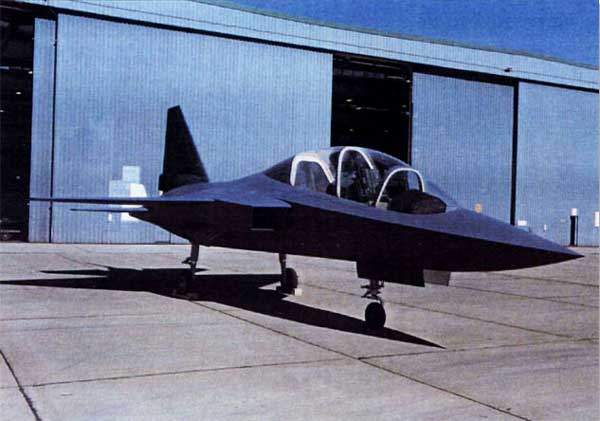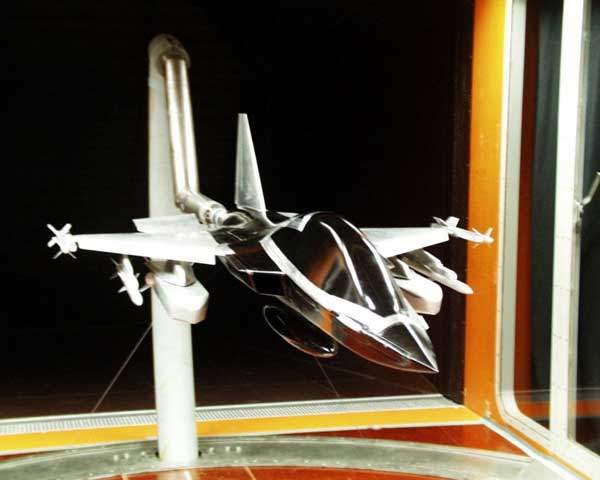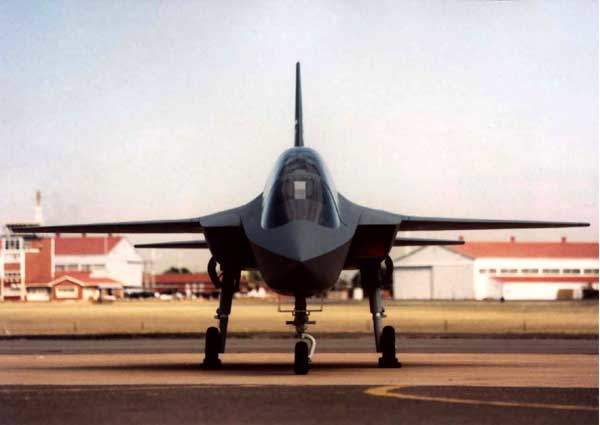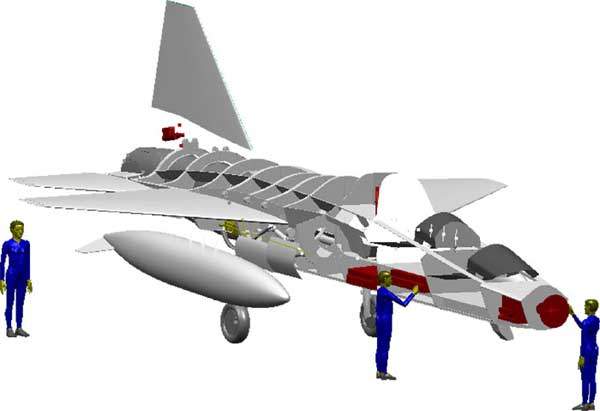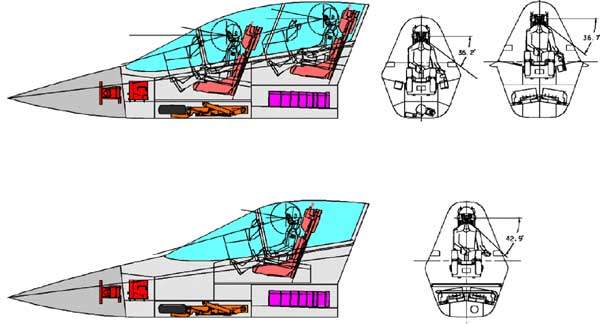Mako is an advanced trainer and light combat aircraft developed at the EADS Military Aircraft facility based in Munchen, Germany. EADS was joined in November 1999 by the air force and air defence force of the United Arab Emirates as a full partner in the programme. The definition phase of the aircraft development programme is complete, but the UAE has withdrawn from the project. No decision on production of the aircraft has been taken and there has been no confirmation of the first flight, which was scheduled for 2009. The programme is considered cancelled.
Mako trainer and light combat aircraft variants
The light combat aircraft is the primary variant of the Mako, which is available as a single-seat light combat aircraft for air defence and reconnaissance missions.
The trainer variant, with a stepped two-seat cockpit, is offered with and without the internal gun and multi-mode radar. In-flight weapon system simulators can be installed with a library of synthetic targets and threats.
Mako programme partners
At the Paris Air Show in June 2001, the following companies signed memoranda of understanding (MoU) with EADS and the UAE to support the Mako programme: Rockwell Collins for displays and controls, navigation, communication; Flight Visions for displays and controls; APPH Precision Hydraulics (UK) for landing gear and hydraulics systems; BAE Systems Controls (UK / USA) bidding for flight control computers, flight control system actuation and untility control system; BGT / Diehl (Germany) for flight control computers, mission computers and participation in weapon systems and countermeasures; Fairey Hydraulics Ltd (UK) for flight control system actuation; the SNECMA Group (France) offers M88-2 engine, landing gear (Messier-Dowty), gearbox (Hispano-Suiza), APU / starting systems (Microturbo).
The following companies had previously signed MoUs as potential suppliers: Computing Devices (UK) for mission control computer, displays and controls and stores control system; General Electric (USA) for the GE 414M engine; Honeywell (USA) for the environmental control system, external lighting, life-support system, navigation, hydraulics and secondary power system.
Mako weapon systems
The aircraft is equipped with seven hardpoints for external installation of weapons for anti-air and ground attack missions. There is a single hardpoint under the fuselage on the centreline, a single hardpoint for an air-to-air missile on each wingtip and two hardpoints under each wing. The aircraft can carry a maximum weapons load of 4,500kg.
Mako can carry a variety of weapons: air-to-air missiles, for example, AIM-9L Sidewinder, IRIS-I or ASRAAM, AMRAAM, FMRAAM, Mica; air-to-ground missiles such as Maverick; anti-ship and stand-off missiles such as Taurus; and mk82 bombs. An optional Mauser BK 27mm internal gun can be installed.
Radar
The aircraft is offered with optional and alternative radar systems, including the BAE Systems Bluehawk, Thales RD-400 or the AN/APG-67 multi-mode radar.
Cockpit
The aircraft accommodates one or two pilots. The glass cockpit layout and the instrumentation closely resemble those of the Eurofighter Typhoon. Each cockpit is fitted with three multifunction displays.
The high-visibility, single-piece windscreen hinges forward for maintenance of the avionics systems. The canopy opens to the starboard side.
The electronic flight control system is derived from the EFCS developed for the X-31 demonstrator aircraft. The flight control system incorporates a quadruplex digital fly-by-wire system.
The modular configuration of the avionics and instrumentation allows future upgrade systems to be installed. A forward-looking infrared and helmet-mounted sight can be installed.
Mako airframe
The fuselage is of aluminium construction, with mainly carbon fibre air intakes and tail unit. The tailplane is all-moving.
Stealth technology is incorporated into the design. Mako has a radar cross-section of only 1m² at a 44km range. The forward section of the aircraft is chinned to give a low signature. Similarly, the wing and fuselage surfaces are blended and the shaped (non-right-angled) air intakes give low radar cross-section.
Performance
The Mako advanced trainer aircraft can fly at an altitude of 14,400m. The maximum speed of the aircraft is Mach 1.5. The airstrip take-off run and airstrip landing are 450m and 750m respectively. The ferry range of the aircraft is 3,700km.
General Electric GE 414M turbofan engine
The aircraft is powered by a General Electric GE 414M turbofan engine, that provides 98kN (22,000lb) of thrust. The engine is a variant of that which powers the F/A-18E/F Super Hornet entering service with the US Navy. The Mako engine also features a dual channel FADEC (full authority digital engine control) to enhance the operational characteristics of the engine.
The F414 engine generates 35% more thrust compared to that generated by the F404 engine. The length of the engine is 154in.
Landing gear
The aircraft is fitted with retractable, single-wheeled tricycle landing gear similar in structure to that of the Saab Gripen.

